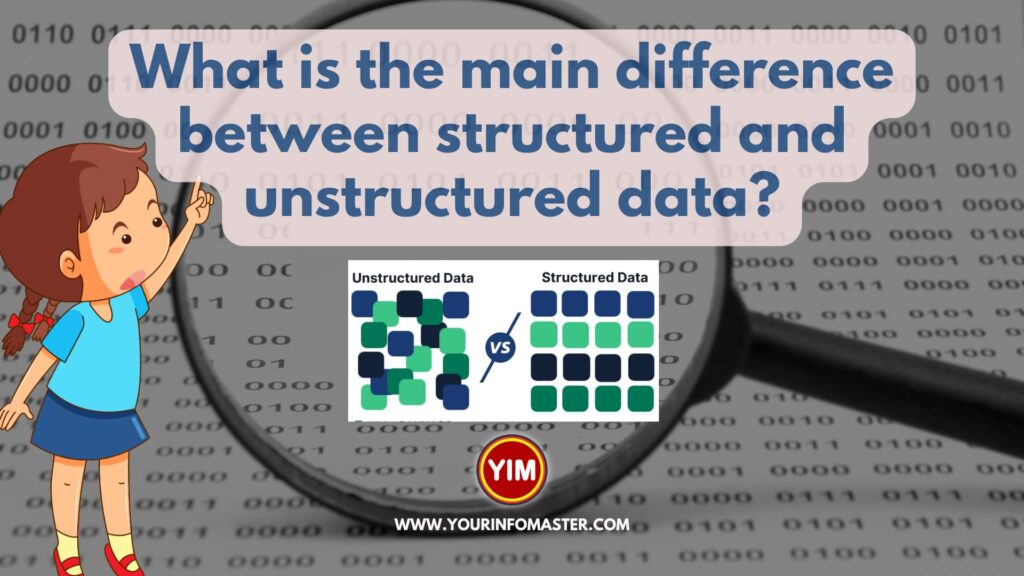I am going to explain the blog post “What is the main difference between structured and unstructured data?“. In today’s data-driven world, data is everything. It’s essential for businesses to collect, store, and analyze data to make informed decisions. However, data comes in different forms, and it’s important to understand the differences between them. The two main types of data are structured and unstructured data. In this blog post, we will explore the main differences between these two types of data and how they impact businesses.
Check also: Water Intake Calculator
10 Differences between structured and unstructured data
10 Differences between Structured and Unstructured Data:
- Definition: Structured data is organized and formatted in a specific way, while unstructured data has no specific format or organization.
- Accessibility: Structured data is easily accessible, whereas unstructured data is difficult to access.
- Storage: Structured data is stored in relational databases, while unstructured data is stored in non-relational databases.
- Data type: Structured data is typically numerical, while unstructured data is typically text-based.
- Scalability: Structured data is easily scalable, while unstructured data is not.
- Analysis: Structured data is easy to analyze with tools like SQL, while unstructured data requires more advanced tools like machine learning algorithms.
- Accuracy: Structured data is more accurate, while unstructured data is less accurate due to the possibility of errors in manual data entry.
- Cost: Structured data is typically more expensive to collect, store, and analyze, while unstructured data is cheaper.
- Volume: Structured data is usually smaller in volume, while unstructured data can be massive.
- Use cases: Structured data is commonly used in finance, accounting, and other numerical fields, while unstructured data is used in social media analysis, sentiment analysis, and natural language processing.
Conclusion
In conclusion, the main difference between structured and unstructured data lies in their organization and accessibility. Structured data is organized and formatted in a predefined manner, making it easier to store, manage, and analyze. It is typically stored in databases or spreadsheets and can be easily queried using SQL or other tools. On the other hand, unstructured data lacks a specific organization or format, making it more difficult to manage and analyze. Examples of unstructured data include text documents, images, videos, and social media posts. While structured data offers more predictability and ease of use, unstructured data provides a wealth of information that can be harnessed with the help of advanced analytics tools.
If you really enjoyed the article “What is the main difference between structured and unstructured data?,” then I would be very grateful if you’d help it spread by emailing it to your friends or sharing it on Twitter, Instagram, or Facebook. Thank you!
Have you read “What is the main difference between structured and unstructured data?“ Which of these blogs are you reading, and how is it similar to one of them?
Read More
- What’s the difference between civil and criminal law?
- Can you share YouTube TV in different houses?
- What’s the difference between peacock and peacock premium?
- How is Aleve back and muscle different from regular Aleve?
- What is the difference between AAA and AAA plus?
- What is the difference between affect and effect?
- What is the difference between mass and weight?
- What is the difference between medicare and medicaid?

